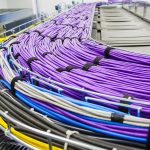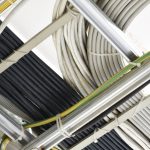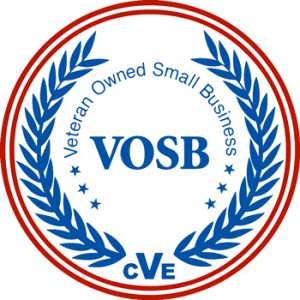5G vs. Fiber Optics: Everything You Need to Know About These Communication Methods
You’ve seen a lot of headlines in the past few years about fiber optics installation (“fiber”) as more cities expand their fiber networks. You’ll also read headlines about 5G networks rolling out with wireless companies. While both offer reasonable transmission rates and speeds, both offer different ways of communicating that gives companies an advantage when expanding their telecommunications infrastructure.
Find out the differences between these telecommunications methods with our brief guide.
How Can You Use 5G for Your Building?
5G is the next-generation wireless communication protocol being installed in cell phone towers across the country. It allows for faster data speeds compared to 4G and 4G LTE, especially in the age of streaming on mobile devices.
For commercial applications in your building, 5G is thought to bring about a revolution in IoT devices. For example, you can monitor your assets outside of your building, like a fleet of vehicles or shipments to track, with the power of 5G networks that can transmit around 20 Gbps. If you’ve got temperature-sensitive or humidity-sensitive shipments, you can monitor conditions in transit.
You can do the same with the maintenance of your industrial machines with IoT devices that transmit wireless information to mobile devices regarding the conditions of lubricants, electrical connections, and parts so you can schedule maintenance at the right time.
5G is excellent for raw data transmission that doesn’t need HD-quality video. That’s why IoT devices sending data to cloud-based apps can utilize 5G networks.
Another advantage of 5G is its flexibility as your company adapts to this new communication model. As new 5G towers come online, you can move your operations accordingly. However, 5G is coming online slowly, and not all carriers have it. When considering investing in more infrastructure for 5G, you’ll want to figure out how many devices need 5G and where the nearest tower is.
However, 5G is limited in the amount of data it can transmit at one time. If each connected device can handle 20 Gbps, 5G will work. For more complex processes or HD-quality transmission for video, fiber may work more appropriately. And there may be limits on various 5G providers and devices that work on a 5G network.
Why Fiber Optics Are Still Viable for Your Facility
Fiber optic cables have lightning-fast data transmission speeds, up to 1 petabit of data per second. There is also less data loss, giving you a more reliable, high-speed connection. With fiber optics, data is transmitted via light signals that are transmitted through glass fibers, allowing for near-instantaneous transmission speeds. This fast speed is particularly advantageous for businesses that require large amounts of data transfer, such as streaming video.
Fiber is fantastic when security or video is a chief concern for you, such as for sensitive areas or access points. It’s also viable for monitoring hazardous areas where humans don’t need to be all the time. For example, you have equipment rooms that operate at higher or lower temperatures, and video cameras help you monitor conditions there.
Additionally, fiber optic cables offer greater bandwidth, supporting more data-intensive applications without sacrificing speed. Fiber benefits businesses that rely on cloud computing or other high-bandwidth applications. Furthermore, fiber optics are highly durable and resistant to electromagnetic interference, making them a reliable option for businesses in noisy or high-traffic areas.
Fiber optics are also relevant for larger facilities, such as factories and warehouses, where distances are measured in thousands of feet rather than hundreds. If you need near-instantaneous communication between a loading dock and a plant manager, having fiber optics in your building is the way to go.
Videoconferencing with remote teams is another reason fiber optics is vital to your telecommunications infrastructure. Let’s say you’ve got one team in a situation room, another on the plant floor, and a third team three states over, analyzing a piece of industrial equipment to troubleshoot a problem. Fiber optics transmission is the way to go here. You can have a wireless camera pointed to the equipment, and those images are transmitted to your server room or wireless intranet rather than a 5G network through cell phone towers. Then, the remote team looking at the equipment can easily assess what’s going on without an interruption or loss of signal.
We Can Assess Your Building’s Telecommunications Infrastructure
The team at CKC Data Solutions has the knowledge, certifications, and expertise to assess and install your telecommunications infrastructure. We’ll look over what you currently have, utilize the top software for making a wireless network heat map, and give you an idea of what you can do to improve your building’s telecom infrastructure.
Contact us or call (417) 812-5251 to start the conversation.





